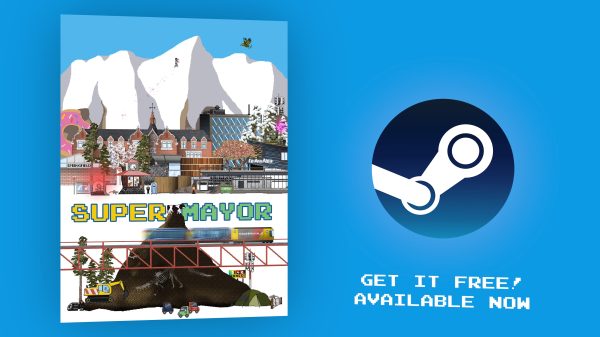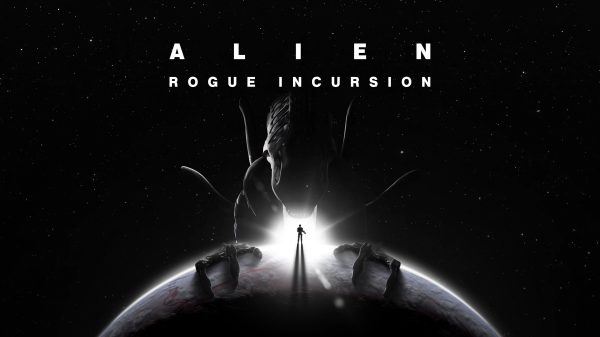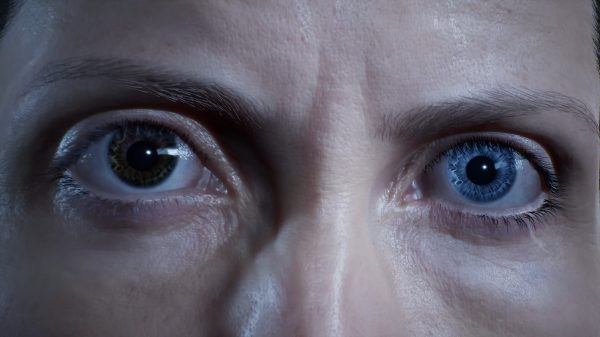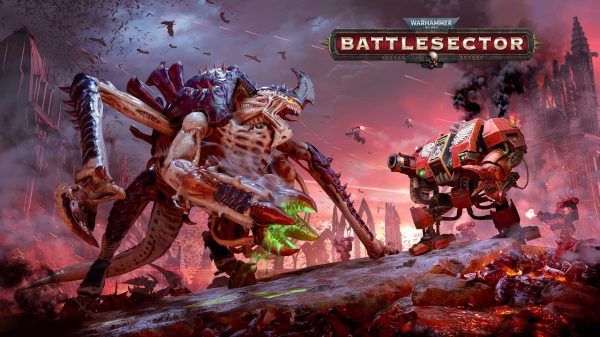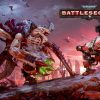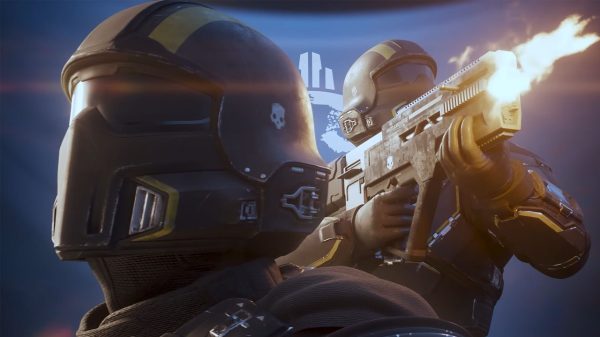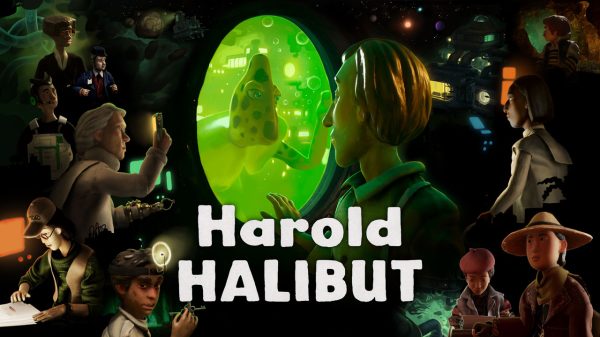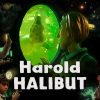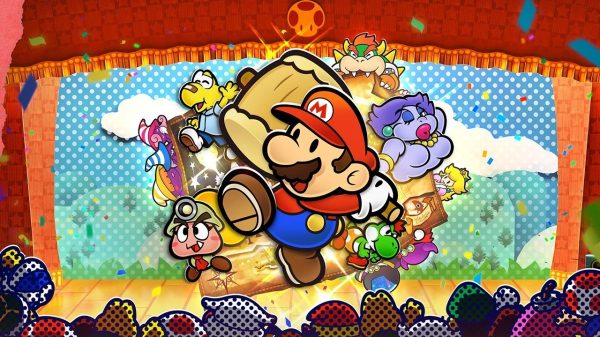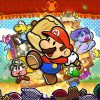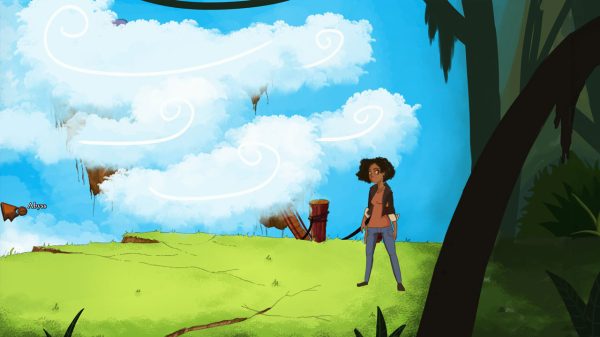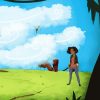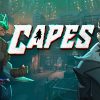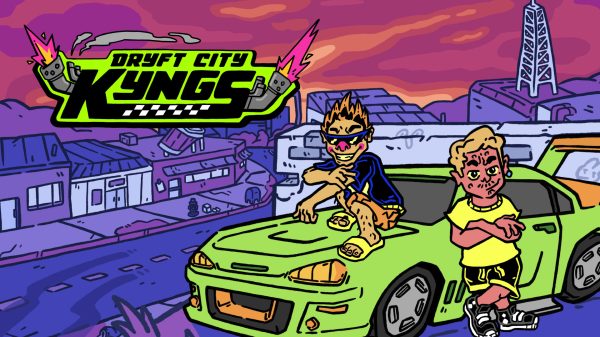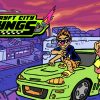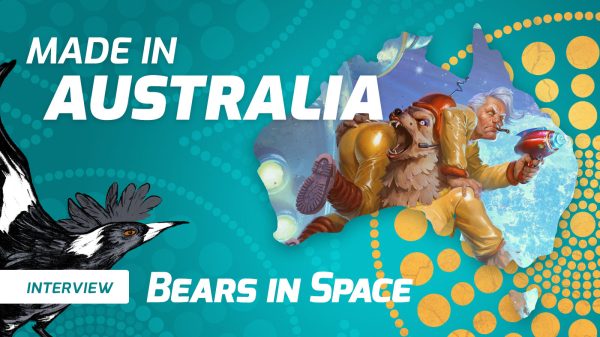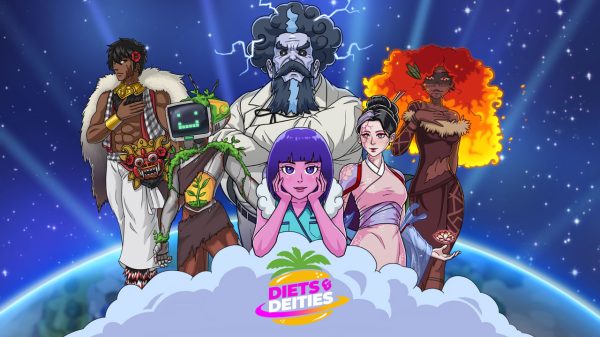Australia is blessed with many talented indie developers and it makes for a myriad of unique gaming experiences. One such unique experience is Wayward Strand from the Melbourne-based studio Ghost Pattern – a game utilising novel storytelling mechanics to tell its emotional narrative(s). I was able to go hands-on with the game at PAX Aus 2019, where it was a part of the PAX Aus 2019 Indie Showcase, with it becoming one of my most anticipated indie titles in the process.
With a 2020 release on the cards, I was able to catch up with Ghost Pattern’s Jason Bakker (writer, producer and designer), Marigold ‘Goldie’ Bartlett (artist) and Maize Wallin (sound design) and chat about the game’s origins and influences as well as how the game’s development is going in the current turbulent times.
WellPlayed: Thank you for taking the time to chat with us today. You’re developing a game called Wayward Strand – give us the game’s elevator pitch.
Jason Bakker: Sure! Wayward Strand is a heartfelt interactive story about Casey, a teenage girl who explores an airborne hospital and gets to know the staff and patients on board.
WP: How long has Wayward Strand been in development?
JB: Quite a while – we started a bit over four years ago I think.
WP: What inspired the game’s 1970s Australian setting?
JB: We arrived at it in quite a natural process – originally we had the idea for the airborne hospital without an exact setting, and it could have been set anywhere. But over time we realised that setting it in Australia would allow us to draw from the richness of our own histories, and the history of our families and our communities.
For me personally, a big inspiration came from short fiction – many of the short stories that I had been reading were set in locations the author had a personal connection to, and I wanted to explore that, and I feel so lucky that we did.
WP: The art style is incredible, what was the inspiration for this art direction?
Marigold (Goldie) Bartlett: Ok buckle in. For such a character-heavy piece I wanted to draw from the best character artists out there, and also from stage and set design, seeing as these characters might as well be actors in a play, and our setting is so unusual. Good, straightforward character designers like Daniel Clowes and Aurélie Neyret, and strong compositional illustrators and painters like John Brack and Chris Ware have been important at the base of the visual style.
For stage stuff I started out thinking about shoebox models, and looking at the masters of set design like Charles Steckler, Andrew Leitch and Wes Anderson. For the soft watercoloury style it’s just a part of my general inspiration that I’ve picked up along the way, but some of my favourite watercolour artists at the moment are Sarah Glidden and Nina Johansson.
I also was inspired early on by this very cool German interior designer named Wilhelm Dechert, and French furniture designer Émile-Jacques Ruhlmann, both of whose deco-era paintings definitely sculpted a lot of the early building blocks… even though Wayward Strand doesn’t really look like any of these influences anymore, they’re underneath it for sure. The ship is sort of softly deco-styled as a result, but has some of the 1970s mod cons too.
More generally I could also include ‘kids books’ and ‘kids cartoons’ but I really mean that as a vibe rather than any particular series. I also have to mention Dad, who was a hospital architect, so I think I came into the project with some of the questions a hospital architect might have when turning an old, flying ship into a hospital! Also, it turns out consulting with a real architect has been intensely good – I have been fortunate to work with the incredible artist Su-Yiin Lai (https://su-yi.in/) on realizing how this flying ship hospital might actually work functionally AND fit aesthetically into the Wayward Strand style we’ve been building.
Oh, and Hergé, of course. Always Hergé. Ligne Claire has been in my art for as long as I’ve held pencils and I always mention it last! It’s an art style which is a little bit different to Wayward Strand in that it uses uniform line width, where we have some differing line thickness throughout, but is similar in that it’s definitely line-focused with fairly simple colours behind. And finally I want to mention Borderlands as a bit of a base for inspiration in games for me too, with the cel-shading style coming from there for me, and also a lot of their set design in BL3 was super interesting and well done, especially in those big decrepit Victorian houses they made.
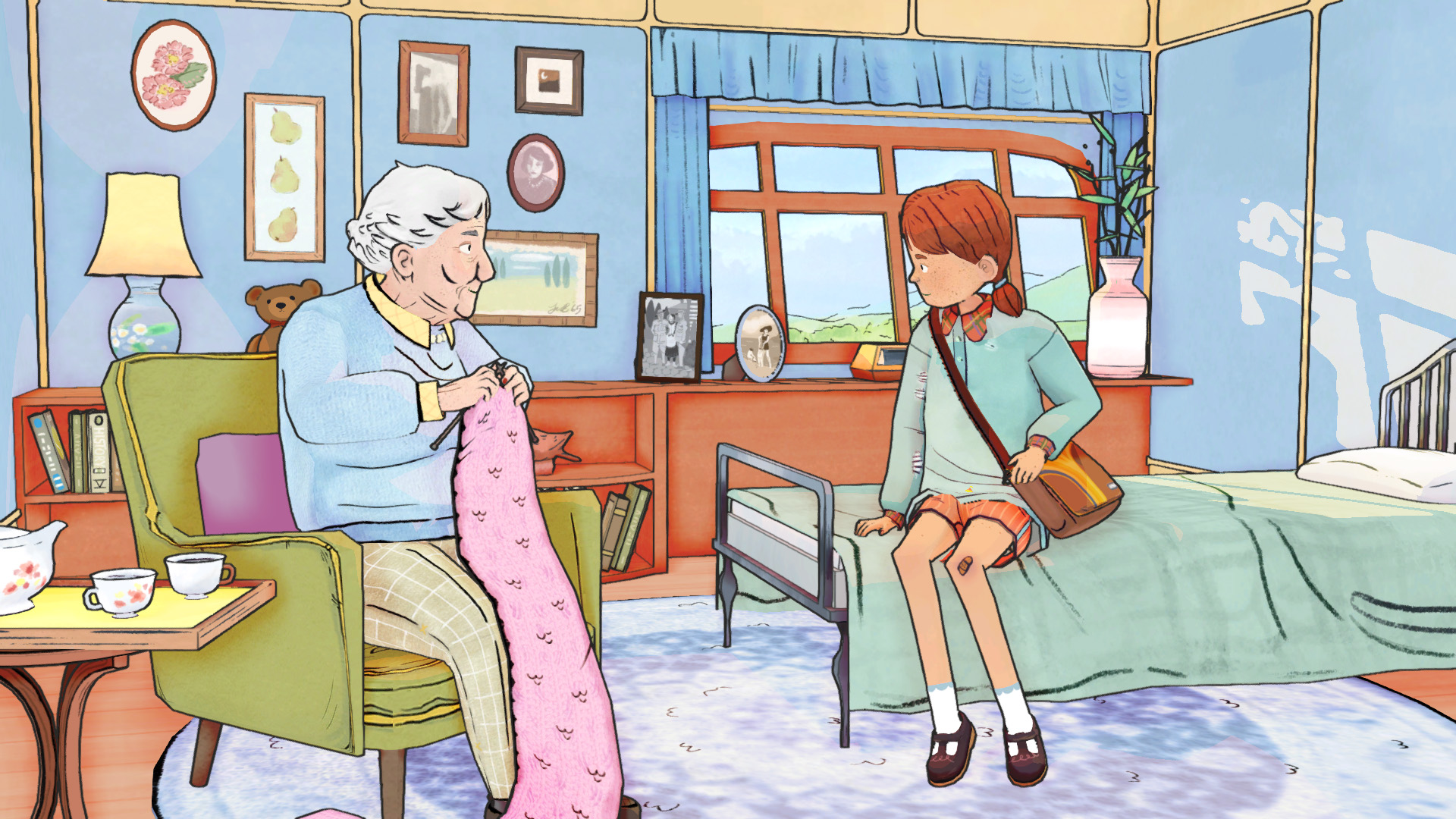
Goldie has done a fantastic job creating the game’s beautiful art style
WP: The game is billed as an interactive story and it plays like a point-and-click visual novel. What made you want to design a game like this?
JB: Wayward Strand’s game design has been all about building our world, and telling the stories of our characters. We have never really thought too much about genre – this is probably why we have a hard time describing the experience of playing Wayward Strand in a short, snappy way.
Each member of the team has their own reason for why the experience appeals to them, but for me, I’ve always loved stories that include ensembles of interesting characters, who each have a personal journey throughout the story.
While many games include lots of different characters, I believe that the primacy of player agency in conventional game design fundamentally limits the ability to tell meaningful stories with these ensembles of characters. By having the player character be, or become, the most powerful and influential character within the story, the character whose choices ‘really matter’, this diminishes the choices and stories of the other characters.
Conversely, by empowering our characters – our ‘NPCs’ – to be full and complete characters in their own right – in charge of their own lives and actions – this allows us to tell more powerful and complete stories. In Wayward Strand this extends to the very nature of time itself; while in most games, NPC stories are usually paused until the player completes an action, or are subtly or unsubtly linked to the player story’s progression, in Wayward Strand, all characters’ stories move forward regardless of what you’re doing.
While you can affect certain characters’ lives in subtle and complex ways, they won’t wait around for you to arrive and have your effect on them. Events are constantly happening on board the ship, and if you’re not there for an event, it still happens, and its consequences reverberate throughout the ship’s community.
Wayward Strand is not a storytelling puzzle, in which you need to find the key to solve a particular character’s storyline. Instead, it is simply a story – a set of stories – in which you can be involved or not; in which you can have an effect, or not – and in which each character, player or NPC, is the protagonist of their own story.
WP: We got to play the game at PAX Aus last year and not all of the characters are voiced, are you aiming to have all the characters voiced?
JB: That is the plan! Most of the versions of Wayward Strand that we’ve made over the years have been fully voiced – our current demo is only partially voiced, because we wanted to include our updated narrative design that we have not yet had a chance to do voice production for.
Maize Wallin: Having so many Australian accents in the game is of huge importance to us. We’ve found that players love and appreciate it just as much as us too. We’ve been able to work with some amazing actors – a huge boon of having a game with so many oldies has been that we get to work with actors who are also old! They might be so old they have over half a century of acting experience! It’s pretty intimidating, when you see these amazing actors walk into the studio, and you’re meant to direct them.
WP: Each of the characters onboard the ship has their own story to tell. Are any of these based on true stories, whether personal or from family or friends?
JB: Pretty well every character and story within Wayward Strand has a link to a team member’s personal life, history, family or community. Like all fiction, these stories are then reflected through our imaginations, clarified, and mixed in with each other. But we are focused on there being a strong link between the stories we are telling, and our personal lives and relationships – and that, along with our research and consultation process, is where we go for inspiration.
MW: Growing up with a very young and hard working mum, from very early on I was able to influence the story of Casey and her mother Ruth, who is the head nurse aboard the ship. And being nonbinary, it’s been amazing to research queer repesentation in 1970s Australia with this team, and to explore what that means for our characters’ experiences of gender.
GB: Yeah like Maize and Jason said, everything comes from our lives or the lives of people we’ve grown up with or near, it’s as realistic as possible, character wise…My Mum was a nurse in the 70-90s and was always telling me the most heartwarming, and sometimes the most terrible, stories from her work. And I guess that painted in my mind some vivid imagery of her as a young woman, and of that world, hospital life…I dunno, there’s lots of her in the game for me. Part of it feels like record keeping, trying to keep some memories of her and the other people whose stories are here, safe and evergreen in this artifact.

Just some of the locations to explore and discover stories aboard the airship
WP: Part of Wayward Strand’s charm is that it’s a short and sweet experience that can be played through in one sitting, but it also features replayability. What was the thinking behind this design?
JB: I think one thing that unites the team as storytellers is the value of a story told in a way that values the audience’s time. One thing that frustrates me personally with a lot of games – particularly AAA games – is that they might draw a lot from filmic storytelling, but they take 20 hours to tell the same story that a film would tell in 90 minutes.
With Wayward Strand, for my part I was keen to try to go in the opposite direction. Let’s use the advantage of this interactive medium to tell a dozen different, interwoven stories within the same amount of time as a film. This does contribute to the experience being very replayable, in terms of seeing things that you didn’t see the first time you played it, and deepening your understanding of how each story interweaves with the others, but this is really an unintended consequence. We are designing Wayward Strand such that even if you just play it a single time, we want you to have a meaningful, worthwhile experience.
WP: Last year the game was part of PAX Australia’s Indie Showcase. That would have been a huge confidence booster for the team?
JB: It was really wonderful, for all of us, to be able to bring Wayward Strand to the PAX audience and have such a positive reaction to what we feel is quite an experimental storytelling experience. As game makers who feel like we go against the grain of conventional game design wisdom in a lot of ways, we really weren’t sure what an audience of people who play tons of games would think about what we are making, but we were delighted by the response – people really dug what we were doing and got excited about the game, the world and the stories we are telling.
In a sense, this is the big risk of Wayward Strand – while we have this unique storytelling style, and that’s a draw for players who love interactive fiction and are curious to try something different, our focus on story above player agency or interactive features really means that our game relies on the specifics of our characters and their journeys – and PAX really highlighted that there’s a keen interest out there, in these personal stories that we’re telling.
GB: and, you know, actually being selected for The Showcase was nice too!
WP: Wayward Strand has been shown at a number of expos. What has the public’s feedback been?
JB: It’s been really positive, both from audiences like the PAX audience, as well as the general public – when we showed Wayward Strand at ACMI’s Audience Lab event, we had people wandering in from Federation Square who sat down with Wayward Strand and were entranced by it.
I think the real-time nature of our storytelling is beneficial for audiences that are less familiar with playing games – while there are conversations or events in Wayward Strand in which you can be a very active participant, you can also just wander around and watch what’s going on, or you can land somewhere in between.
MW: We’ve all been complimented so much at these events! “Wow the animations are amazing!”, “The music is perfect!”, “The voices are so relatable”, “The colours and art is amazing”, “The real time stories are so cool!” We’re so happy that people have connected with all the different parts of our game.
GB: Absolutely. I got to show the game in San Francisco in November where it was curated for Day of The Devs. The best relief from that was that the Aussie-ness translated perfectly with the American Audience. It was a massive confidence booster – all of the feedback I got was astonishingly positive and exciting, I even had someone crying and thanking me…Lots of people thanking me! It was very overwhelming but obviously a nice thing to think about afterwards. The most touching thing I heard was from a young woman who told me she was phobic of hospitals but that the art style had convinced her to have a go, and that she was really excited after the demo to be able to play it, that it was helping her with her phobia. That sort of stuff is like, unusual edge case stuff but so nice and confidence boosting.
WP: You’ve already expanded on the game’s lore with a couple of game jam games. Do you have any plans to further expand on the lore?
JB: It’s an interesting question! There aren’t necessarily specific plans in place, but the design of Wayward Strand’s narrative requires a lot of work that might never show up in the game itself. While the game takes place across three specific days, we have to extrapolate backwards in time a lot, to be able to depict our characters to the depth that we want. This might be anything from, where this character was, and how they were affected, by the World Wars, to specific events that occurred in their lives or careers.
I’ve been listening to a great podcast recently, The Eleventh, that explores the history of the sacking of Australia’s Prime Minister, Gough Whitlam – this occurred in 1975, three years before Wayward Strand is set, so questions I’ve been asking are, how did that affect this character’s opinion on and trust in the government, and how does that then affect their personality and dialogue?
All that is to say that, there’s a lot that has gone into constructing our characters’ lives, their stories and their dialogue, and it would be interesting to get a chance to bring more of that to light.
GB: I don’t think it’s out of the question to expand it more, you never know when a game jam will crop up, and I’ve also been working on a few things…We’ll see!
WP: So far the game has been announced for PC and mobile, are there any plans to bring the game to consoles?
JB: We can’t really commit to any console releases as yet – but one of our focuses is on accessibility, so where it’s financially feasible on our end, we’d love for it to be accessible across whatever devices a particular player might have.
WP: Has the game’s development suffered as a result of the recent COVID-19 outbreak?
JB: Yes, Wayward Strand’s development has definitely been affected! While we can’t speak too much about the details, our financial situation, both of the studio and the team as individuals, has been negatively impacted by the pandemic. To be honest, we’ve had to slow down development significantly over the past month as we focus on personal survival. We’re hopeful that the specific issues holding up full production will be resolved before the crisis ends, and exciting things are still happening in our development process, but we’re also preparing to be in this reduced state for a while.
WP: Wayward Strand currently has a 2020 release window. Can you narrow that down for us at all?
JB: Unfortunately not! We’re all keen to get Wayward Strand out as soon as we can, but we also can’t yet commit to a specific date – particularly when taking the effect of the pandemic into account. In a certain sense, it’s out of our hands for the moment.
WP: Good luck with the rest of the game’s development. We can’t wait to play it!
Everyone: Neither can we!
Despite a childhood playing survival horrors, point and clicks and beat ’em ups, these days Zach tries to convince people that Homefront: The Revolution is a good game while pining for a sequel to The Order: 1886 and a live-action Treasure Planet film. Carlton, Burnley FC & SJ Sharks fan. Get around him on Twitter @tightinthejorts





